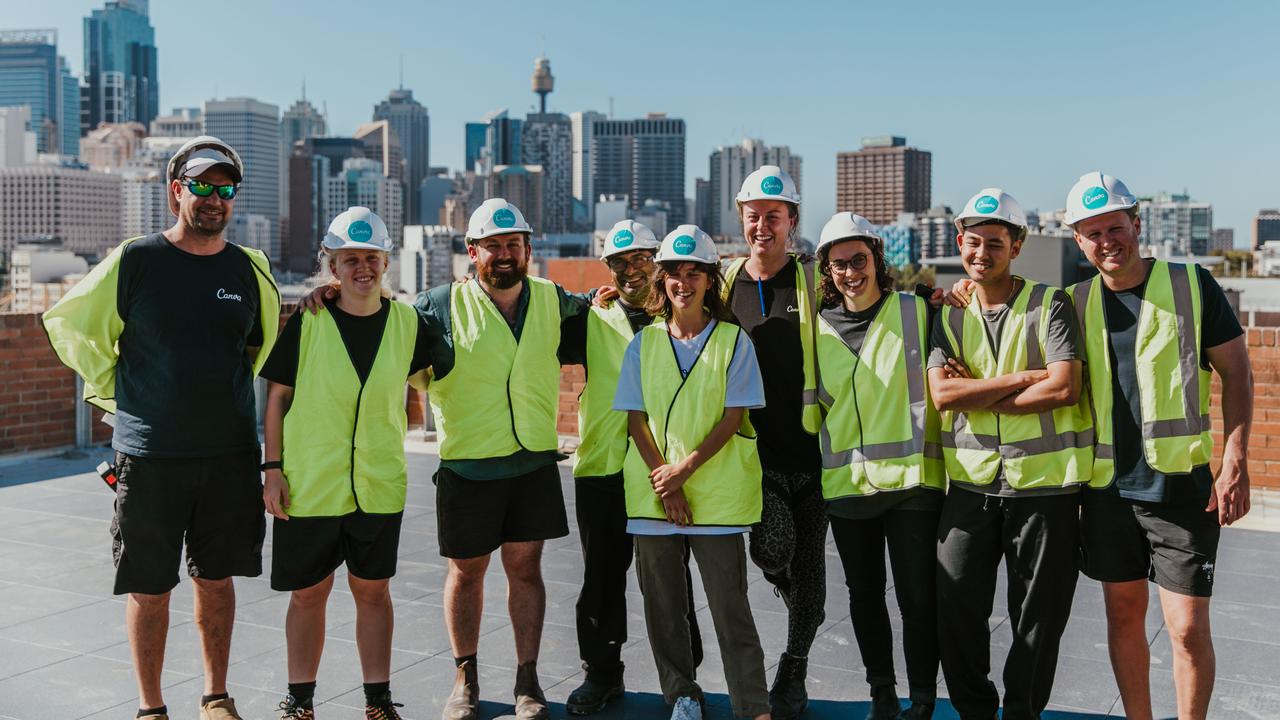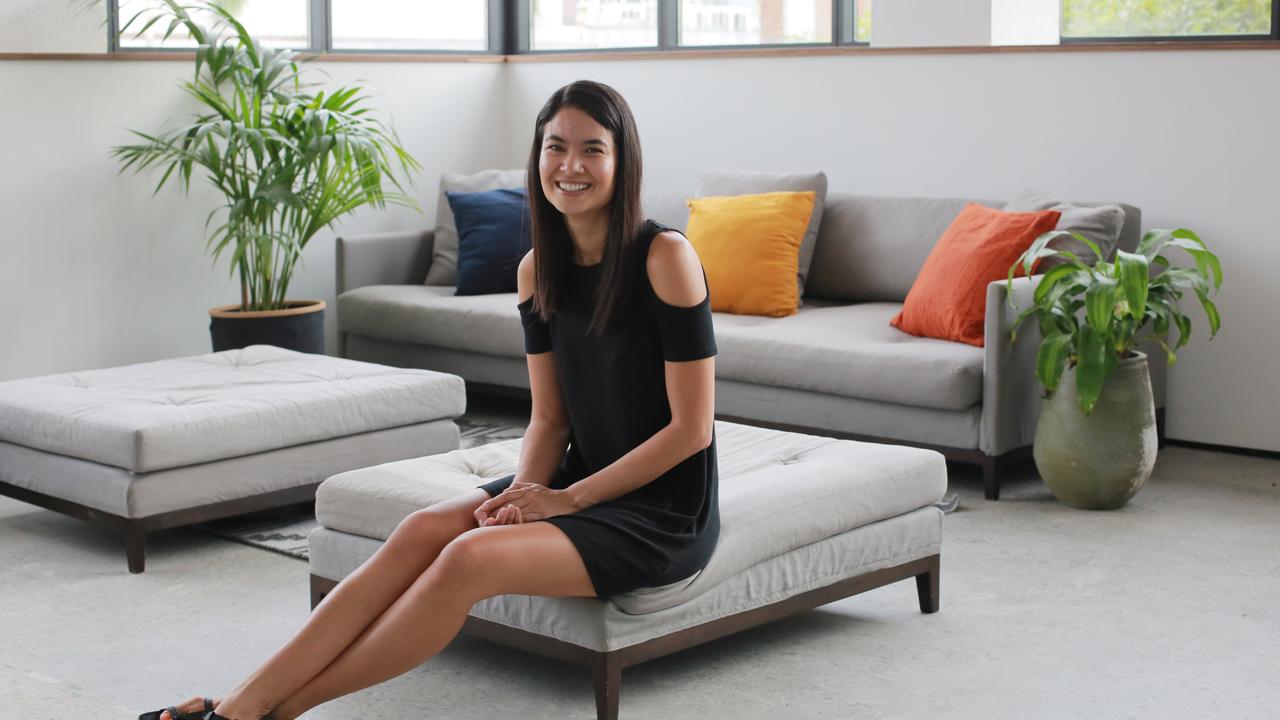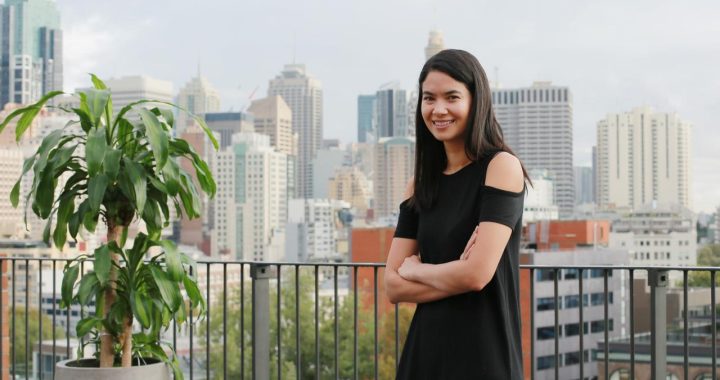The word “billion” looms large in the life of Melanie Perkins. In five years, the Canva chief has taken her graphics design software company from a start-up to a firm valued at $US1 billion ($1.4bn).
And early this year, the company reached another milestone. Canva, a popular online tool for designing posters, flyers, web pages, resumes, customised company branding and presentations used in 190 countries, chalked up one billion designs around the world. So common is its use, that Canva says 33 designs are created on its platform every second.
“Hundreds of thousands of resumes have been created to help people land jobs. We’ve had 25,000 non-profits using Canva to help spread the message and get a non-profit off the ground,” Perkins tells The Weekend Australian.
It’s a massive achievement in five years for the youthful 31-year-old and her two co-founders, long-term boyfriend Cliff Obrecht, whom she met at the University of Western Australia more than a decade ago, and Cameron Adams, a former Google product designer.
Together, Perkins and Obrecht had founded an earlier venture, Fusion Books, a design tool that takes the hassle out of creating school yearbooks. Nowadays Fusion Yearbooks is run from Canva’s Sydney office and claims to print thousands of yearbooks for schools in Australia, New Zealand and Europe.
Perkins has stamped her own style of workplace culture on Canva, which includes the entire staff sharing sit-down lunches as one big workplace family.
Next week, Canva notches up another milestone. Last year it acquired an eight-storey building on the edge of Sydney’s central business district, and the company begins moving in next week.
In typical Canva style, the roof is being fitted with an outdoor bar and the kitchens are being designed to prepare hot sit-down lunches for the 1000 employees, mainly software engineers, designers and product managers, who will work there. Feeding so many so quickly is no mean feat even for a dedicated restaurant.
“It’s something that we’re going to do forever more — to have lunch together,” Perkins says. “It’s such an important thing that we’ve done right from the early days. It means people are coming together to get to know people outside their team. They’re getting to feel comfortable.
“In the same vein, we have clubs. There’s a club for absolutely everything from board games to circus clubs to just absolutely everything you can imagine: running clubs, sleep (nap) clubs.
“We hire incredibly smart people who want to bring their passions and everything to work.”
The move in Sydney is additional to offices Canva has set up in Manila and Beijing.
While the world’s economic woes have seen massive downsizing in the corporate world, Canva is doubling its staff two years in a row, from 250 in January last year to 550 now and the 1000 target by year’s end once the move has taken place.

“It has a lot of challenges. We’re bringing on people, ensuring that they understand our culture, and our vision of what we’re trying to achieve, and all those big goals. It wasn’t that long ago there was just a few of us around in my mum’s living room with that first company, and then to see it actually blossom.
There’s still no plan being ventilated to take Canva private despite its recent profitability, but Perkins doesn’t rule it out. “It’s not on the short term horizon, but it certainly wouldn’t write it off the cards in the future,” she said.
Canva reached its $US1bn valuation in January last year after a fresh $US40m injection of funds by Sequoia China and previous investors, Blackbird Ventures and Felicis Ventures. Despite the big investments, it took a few years for Canva to make a profit, but Perkins says achieving this within five years is “atypical in the tech world”. Its first profit after tax was $1.86m for the second half of 2017.
“It means we can invest in our long term future,” she said. “Most tech companies invest millions of dollars and don’t return a profit for many years, sometimes in decades.”
With money rolling in, Canva has been building Canva 2.0, the second version of its software, and rolling it out across various web-based and mobile platforms. It expands the platform to right-left languages: Arabic, Hebrew, Urdu, Farsi, Punjabi, Kurdish and Uyghur.
She said all software components were built with internationalisation in mind. “Our goal is to empower the whole world to design.”

For the overwhelming majority of its more than 15 million users, Canva is a free service with more than 50,000 free templates available. Users can also buy designs through its marketplace.
It also makes its money through its premium service with more than 300,000 paying customers, stock photography, its professional print services and soon, world wide T-shirt designing and printing with Canva T-shirts. The T-shirt venture will initially launch in the US.
This week it announced the expansion of its design and print services to throughout southeast Asia, with a total 44 international markets aboard.
Canva Print will now be available in Singapore, Malaysia, Hong Kong, Taiwan, Macau, Thailand, Indonesia, Vietnam, Philippines and Brunei. Users can go online and design posters, business cards, flyers, postcards, invitations and letterheads, and have them delivered to their countries in 2-3 business days.
One of Canva’s strengths is its ability to gain new markets by being savvy about languages, with more than 200 translators making the printing service available in more than 100 languages in the region.
They include simplified and traditional Chinese, Bahasa Indonesian, Bahasa Malay, Thai, Vietnamese and Tagalog. Canva is partnering with Singapore-based KHL Printing, one of southeast Asia’s largest printing companies. The T-shirt venture will initially launch in the US.
Published in The Australian newspaper
